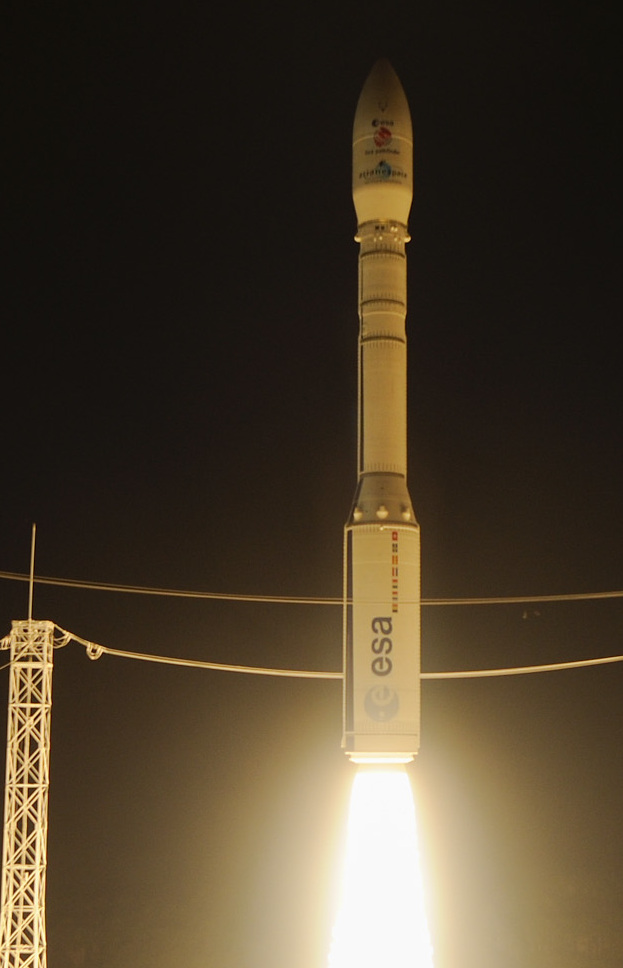BERLIN — The European Space Agency launched a rocket Thursday to carry two cubes of gold and platinum almost 1 million miles from Earth so scientists can see how they’ll behave in a freefall – at a cost of more than $450 million.
What may sound like a frivolous enterprise is actually the prelude to a far more ambitious mission that hopes to measure ripples in space time caused by black holes and other massive objects lurking unseen in dark corners of the galaxy.
Also known as gravitational waves, these ripples were predicted by Albert Einstein a century ago but have never been directly detected.
In order for that mission – tentatively scheduled for launch in 2034 – to succeed, the European Space Agency first has to test whether it can shield objects from external influences well enough to measure the minute effects of gravitational waves.
“We want to see whether we can create an environment in orbit that’s free of interference, and where we can conduct these high-precision measurements,” said Michael Menking, senior vice president for Earth observation, navigation and science at Airbus Defense and Space. The company is the main technology contractor on the LISA Pathfinder mission.
The probe separated from the Vega rocket two hours after its launch from ESA’s space port in French Guiana at 1:04 a.m. local time Thursday.
Send questions/comments to the editors.



Success. Please wait for the page to reload. If the page does not reload within 5 seconds, please refresh the page.
Enter your email and password to access comments.
Hi, to comment on stories you must . This profile is in addition to your subscription and website login.
Already have a commenting profile? .
Invalid username/password.
Please check your email to confirm and complete your registration.
Only subscribers are eligible to post comments. Please subscribe or login first for digital access. Here’s why.
Use the form below to reset your password. When you've submitted your account email, we will send an email with a reset code.